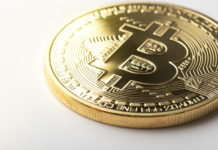 Cochin is a beautiful South Indian city in the State of Kerala. Located on the South-West cost of India by the Arabian Sea, this port city is the second largest corporation of Kerala and among the most visited South Indian cities by tourists. The beautiful beaches of the city clubbed with the rich cultural heritage that has prominent traces of the Portuguese culture makes this city a significant tourism center of the South. As a matter of fact, it wouldn’t be wrong to say that Cochin’s culture is a blend of Portuguese, Dutch and British cultures.
Cochin is a beautiful South Indian city in the State of Kerala. Located on the South-West cost of India by the Arabian Sea, this port city is the second largest corporation of Kerala and among the most visited South Indian cities by tourists. The beautiful beaches of the city clubbed with the rich cultural heritage that has prominent traces of the Portuguese culture makes this city a significant tourism center of the South. As a matter of fact, it wouldn’t be wrong to say that Cochin’s culture is a blend of Portuguese, Dutch and British cultures.
Among the prominent things to experience in Cochin is the oldest church of India, about 500 odd Portuguese homes and a prominent Jewish culture. Apart from the many beautiful places to visit, there is a lot more to Cochin that you will find intriguing and amazing. Read on to know more.
The City with Many Names
Cochin is actually the colonial name of Kochi. The British called the city Cochin whereas the local Keralites preferred calling their city Kochi. In the 1990’s, the city was officially named as Kochi but Cochin is also used commonly by most Indian and foreign travelers visiting the city.
Kochi is an important city in the district of Ernakulam. But often, Kochi is also referred to as Ernakulam, when the mainland city is referred. So, typically Ernakulam city refers to mainland Kochi colloquially and the Ernakulam district refers to the entire district. So, whether you call it Kochi, Cochin or Ernakulam, it is all the same. And yes, you can also call it the ‘Queen of the Arabian Sea’. Of course, what’s in the name!
The Historical Significance of Kochi
Kochi was primarily an important trade center of the South India. The city was known to Greeks, Romans, Jews, Syrians, Arabs and Chinese as a trading center for Indian spices. The first European settlement started in the year 1500 by the Portuguese.
Kochi gained importance as a trade centre in 1340 AD after a massive flood of the Periyar river destroyed the port of Cranganore and also created a natural harbor for Kochi.
Kochi was among the first princely states to join the Indian Union after independence from the British colonial rule.
Some Interesting Facts about Kochi
Kochi, the literal ‘Queen’ of spices
Kochi has gained international significance for its trade in Indian Spices. The Kochi port is particularly popular for trade in high-quality pepper, cardamom, cinnamon and cloves. Also, because of its strategic location on the sea route between Europe, Middle East, Asia and the Pacific Rim, the Kochi harbor soon became a major world trade center. So, if you are traveling overseas, specifically to the European continent, and find the mesmerizing aroma of cardamom in your food there; well, you can quite easily claim that the aroma originated from your own country through Kochi.
Kochi and the European settlements
The culture of Kochi has a major impact of the European culture. It was the Portuguese who began their European settlement in India through Cochin. The Dutch invaded next and later, the British had their colony here. Kochi was popularly referred to as the ‘Little Lisbon’ by the Portuguese as ‘Homely Holland’ by the Dutch and ‘Mini England’ by the British.
The European settlements have left a major influence on the port city and you can still find traces of the European culture on the people here. Though Malayalam is the official language here, English is widely spoken.
Kochi contributes to the Indian Navy
Kochi is the headquarters of the Indian Southern Naval Command and also has the Indian Navy training center and a leading gunnery school is located on the Willingdon Island.
Kochi and its pepper connection
About 90% of the total production of pepper of India is traded through the International Pepper Exchange at Kochi. That’s another reason why calling Kochi, Queen of spice trade is no exaggeration.
Kochi and its connection with Vasco De Gama
Kochi has the first church built by Europeans in India, the St. Francis Church. The church is more popularly known as the original burial spot of the Portuguese trader, Vasco De Gama, though his remains were later moved to Portugal.
Kochi witnessed the first ever water war
The Portuguese and Dutch war of 1656 was the first ever war fought on water vessels in the history. The war broke out for colonization of Kochi and led way for the entry of Dutch, who took over the Portuguese.
The International connect
A major source of income for Kochi is from its NRI population. Most citizens of the city are either employed in the Middle East or the Europe or have their relatives working there. This gives Cochin most NRI income when compared to any other city of India.
Real Madrid to come to Kochi
Kochi has a major football fan following. Football is a very popular sport here and soon, people of Cochin will have a football academy by the Real Madrid here. Now, isn’t that awesome?
Say hello to LuLu
The LuLu mall in Kochi is the biggest mall in India, which is spread over 17 acres. Shopping is ‘big’ here!
The Chinese nets outside China
Kochi’s fishing culture is predominately Chinese. Yes, that’s majorly because of the presence of the Chinese nets in the fishing scene of Kochi. The Chinese nets were introduced to the city by the Chinese traveler Zheng He and are still in use. As a matter of fact, Cochin is the only place outside China that uses these nets for fishing.
Rain, rain and some more rain
Kochi sees the rainy season for a good half of the year. The city experiences rains on an average of 132 days!
Visiting Cochin is a beautiful experience whether you are traveling for leisure or business. Make your trip to the city even more pleasure filled by visiting between October and March, which is the best time to visit the city.
 Cochin is a beautiful South Indian city in the State of Kerala. Located on the South-West cost of India by the Arabian Sea, this port city is the second largest corporation of Kerala and among the most visited South Indian cities by tourists. The beautiful beaches of the city clubbed with the rich cultural heritage that has prominent traces of the Portuguese culture makes this city a significant tourism center of the South. As a matter of fact, it wouldn’t be wrong to say that Cochin’s culture is a blend of Portuguese, Dutch and British cultures.
Cochin is a beautiful South Indian city in the State of Kerala. Located on the South-West cost of India by the Arabian Sea, this port city is the second largest corporation of Kerala and among the most visited South Indian cities by tourists. The beautiful beaches of the city clubbed with the rich cultural heritage that has prominent traces of the Portuguese culture makes this city a significant tourism center of the South. As a matter of fact, it wouldn’t be wrong to say that Cochin’s culture is a blend of Portuguese, Dutch and British cultures.





